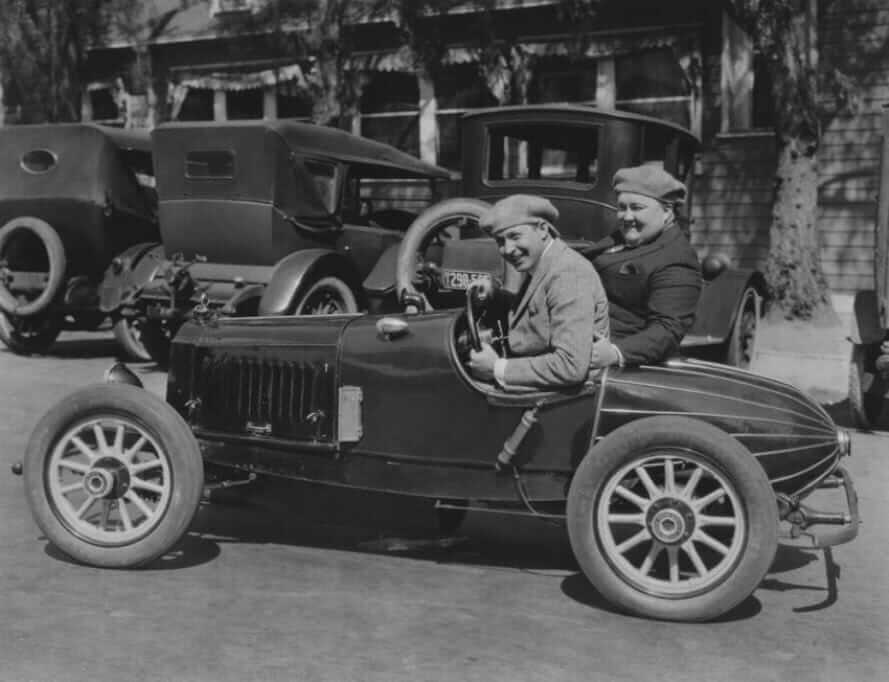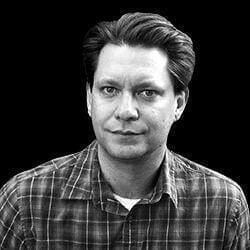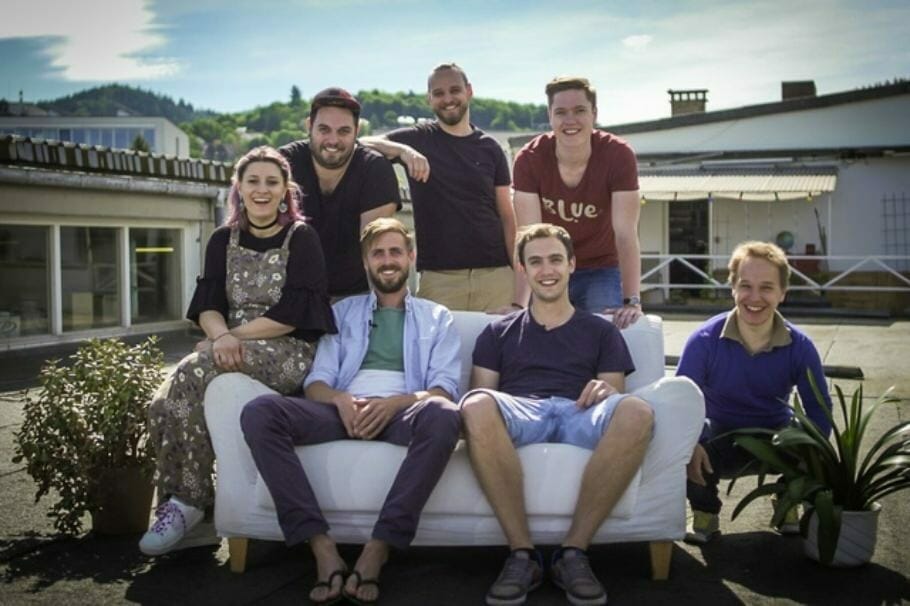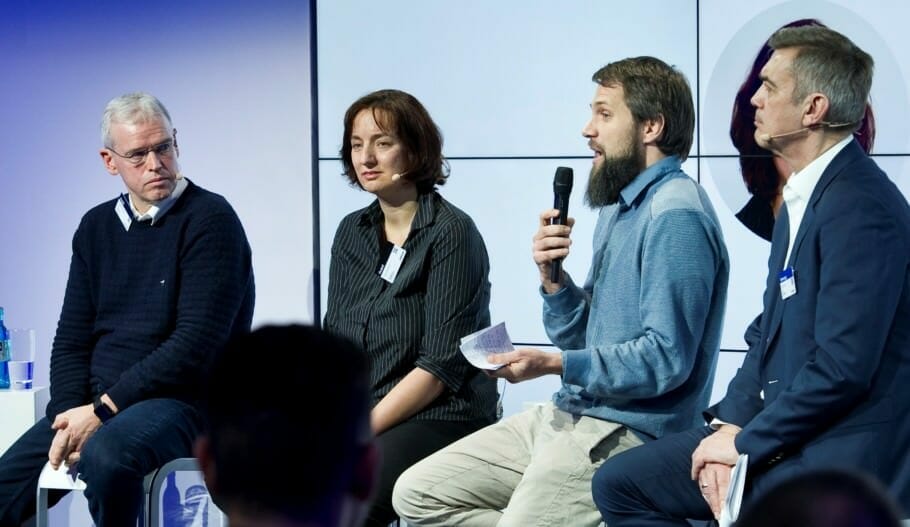For their successful, good life Information you really need: Government-funded publisher, awarded the Global Business Award as Publisher of the Year: Books, Shops, eCourses, data-driven AI-Services. Print and online publications as well as the latest technology go hand in hand - with over 20 years of experience, partners like this Federal Ministry of Education, customers like Samsung, DELL, Telekom or universities. behind it Simone Janson, German Top 10 blogger, referenced in ARD, FAZ, ZEIT, WELT, Wikipedia.
Disclosure & Copyrights: Image material created as part of a free collaboration with Shutterstock. Text originally from: “Elon Musk: How Elon Musk changed the world – The Biography” (2015), published by Münchener Verlagsgruppe (MVG), reprinted with the kind permission of the publisher.
Elon Musk & Tesla: How important is the founder's charisma?
By Ashlee Vance (More) • Last updated on October 02.01.2022, XNUMX • First published on 04.03.2016/XNUMX/XNUMX • So far 4285 readers, 1120 social media shares Likes & Reviews (5 / 5) • Read & write comments
Charisma is for Success crucial - especially as a company founder, like Elon Musk in the Foundation by Tesla clear has proven.

The founder's charisma
Martin Eberhard and Marc Tarpenning founded NuvoMedia in 1997 and with the Companys developed one of the first digital book readers, called the Rocket eBook, Working for NuvoMedia, the two men had learned a lot about the latest technology in consumer electronics and the vastly improved lithium-ion batteries that provided power for laptops and other portable devices.
The Rocket eBook was ultimately too far ahead of its time and was not a great commercial success. Still, it was innovative enough to arouse the interest of the Gemstar International Group, which publishes TV Guide and Technology sold for electronic program guides. In March 2000, Gemstar bought NuvoMedia for $187 million.
From the crazy idea to implementation
Becoming rich in this way, the two founders stayed in even after the sale Contact commonality. Both lived in Woodside, one of the wealthiest cities in Silicon Valley, and occasionally chatted about possible new projects. "We came up with some crazy things," says Tarpenning. “For example, we once thought of a modern irrigation system for farms and houses based on intelligent water sensor systems. But none of it seemed really convincing to us and we wanted something more meaningful.”
Eberhard was an extremely talented engineer with the social conscience of a benefactor. The US' repeated conflicts in the Middle East made him uneasy, as did many others People with scientific interest he started around the year 2000 Problem of climate change as a dangerous reality. So he started, after Alternatives to look for fuel-hungry cars. He studied the potential of hydrogen fuel cells, but found them unconvincing. He didn't see much either Sinn in a leasing model, as offered by General Motors for its EV1 electric car at the time. What caught his interest, however, were the all-electric AC Propulsion cars he was in Internet had discovered. Around 2001, Eberhard drove to Los Angeles to visit the company.
An idea is born
"The building looked like a ghost town and like they were about to close," says Eberhard. "I gave them $500.000 so they could build me one of their cars using lithium-ion batteries instead of lead-acid." Eberhard also tried to persuade AC Propulsion to develop from a kind of hobby workshop into a commercial enterprise. When these efforts failed, Eberhard decided to start his own company to see what could really be achieved with lithium-ion batteries.
First he designed a technical model for his electric car in the form of a table. In it, he was able to change various components and examine how they affect the design and Performance of the car. He could modify the values for weight, number of batteries, tire rolling resistance, and drag, and then calculate how many batteries he needed to power the different versions.
How an idea takes shape
It became clear that the SUVs, which were very popular at the time, were not good ones Candidates were, and also something like a van parted fast out of. The technology seemed more suited to a light, expensive sports car that drives very fast, Fun power and also promised a wider reach than most people would expect. These technical specifications supplemented considerations by Tarpenning, who had meanwhile dealt with the business model for such a car.
At that time, the Toyota Prius was just becoming a fashion in California and was well received by wealthy eco-interested. “Also we found that the average Income from EV1 owners was $200.000 a year,” says Tarpenning. People who used to buy Lexus, BMW or Cadillac saw electric and hybrid cars as a new kind of status symbol. That's how the two men came up with the Idea, to develop a product for the luxury car market, which is worth 3 billion dollars a year in the US - rich people should have fun with it and feel good about it at the same time feel can. "People are willing to pay for cool and sexy and awesome 0-100 acceleration," says Tarpenning.
The creation of a global company
On July 1, 2003, Eberhard and Tarpenning officially founded their new company. A few months earlier, Eberhard was with his Ms. been to Disneyland. During the visit, the name Tesla Motors came to mind. He wanted to pay tribute to the inventor and electric motor pioneer Nikola Tesla, and he just thought the name was cool. The two founders rented one Office with three desks and two small rooms in a derelict 1960s building at 845 Oak Grove Avenue in Menlo Park. The third table there was occupied a few months later by Ian Wright, an engineer who grew up on a farm in New Zealand.
He was a neighbor of the Tesla founders in Woodside and had had them help him refine his investor canvassing for a networking startup. As hoped Money failed to materialize, Wright joined Tesla. The three men let a few confidants in on their plans - and earned nothing but ridicule. “We met a friend at a pub in Woodside and we wanted to tell her what we had finally decided to do and that it was going to be an electric car,” says Tarpenning. "You can't mean that seriously," was the answer.
Here writes for you
 Ashlee Vance is a journalist for the New York Times and CNN, among others. Vance, born in South Africa, is an American business journalist. He wrote, among other things. for the New York Times, The Economist, the Chicago Tribune, CNN.com, and the International Herald Tribune. He is one of the most famous journalists at Bloomberg BusinessWeek and has written countless cover stories about Elon Musk, Mark Zuckerberg and Steve Ballmer. All texts by Ashlee Vance.
Ashlee Vance is a journalist for the New York Times and CNN, among others. Vance, born in South Africa, is an American business journalist. He wrote, among other things. for the New York Times, The Economist, the Chicago Tribune, CNN.com, and the International Herald Tribune. He is one of the most famous journalists at Bloomberg BusinessWeek and has written countless cover stories about Elon Musk, Mark Zuckerberg and Steve Ballmer. All texts by Ashlee Vance.
4 Responses to “Elon Musk & Tesla: How important is the founder’s charisma?”
-
The foundation of #TESLA - Exciting contributiongvkRh9hzAL
-
“Elon Musk & Tesla - Part 1: The Founding of Tesla. At @Berufebilder - Exciting contribution3iBvATFtsr
-
Elon Musk & Tesla - Part 1: The founding of Tesla via BERUFEBILDER - Exciting contributionhv4w0uk58I
-
Elon Musk & Tesla - Part 1: The founding of Tesla via BERUFEBILDER - Exciting contributionChvWJm7oVk









Post a Comment